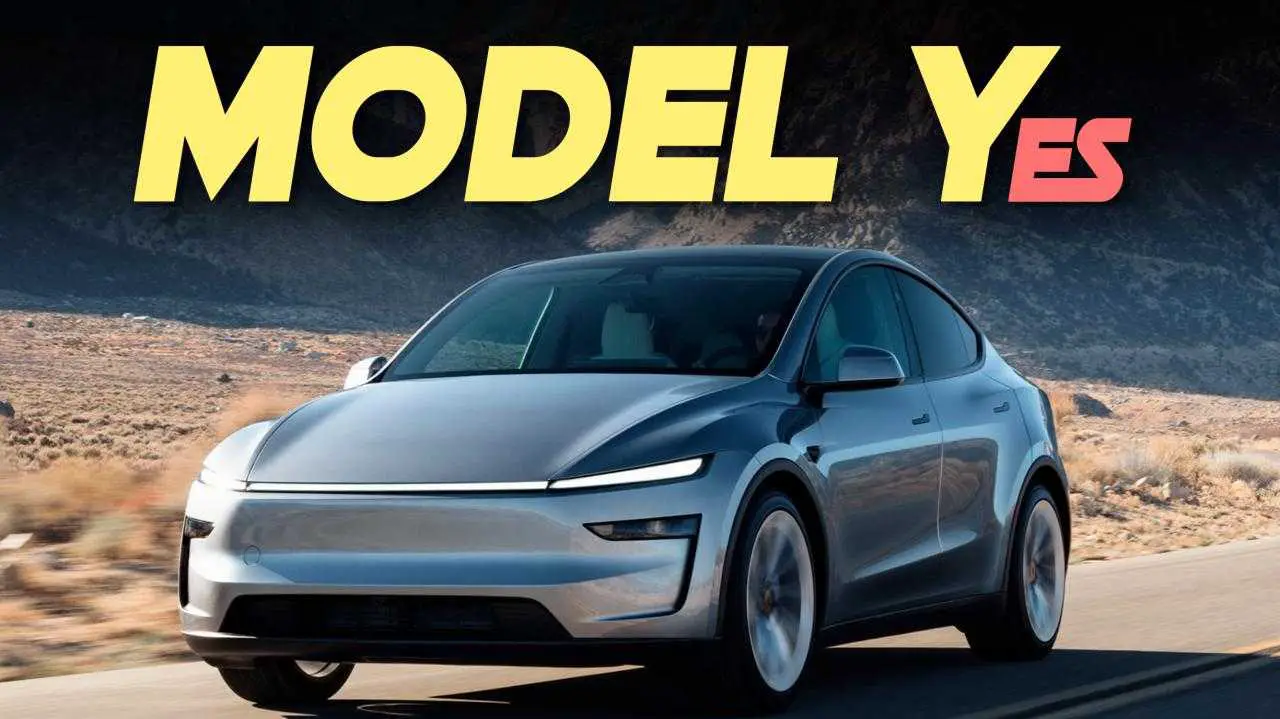
We delve into expected battery tech, performance enhancements, autonomous driving capabilities, and interior refinements.
Keywords: 2025 Tesla Model Y, Tesla Model Y 2025, Tesla Model Y upgrades, Tesla Model Y price 2025, electric SUV, EV, autonomous driving, Tesla battery technology, Tesla performance, Tesla interior, Tesla Cybertruck influence, Tesla software updates, Tesla range, Model Y refresh, future of Tesla, electric vehicle technology
The Tesla Model Y has rapidly become a dominant force in the electric SUV market. Its blend of performance, technology, and practicality has captivated buyers worldwide. But what can we expect from the anticipated 2025 Model Y? Will it be a subtle refinement or a significant leap forward? This in-depth article explores the potential upgrades, features, and challenges facing Tesla as they aim to solidify the Model Y’s position at the forefront of the EV revolution.
I. Predicted Design and Exterior Refinements:
While Tesla is notoriously secretive about upcoming models, several clues and industry trends suggest potential design changes for the 2025 Model Y. The most significant speculation centers around a potential stylistic alignment with the recently unveiled Cybertruck. While a full-blown angular transformation is unlikely, we might see subtle influences in the form of sharper lines, more aggressive front fascia, and potentially revised lighting elements.
Expect minor adjustments to the overall dimensions. These changes might be subtle, focusing on aerodynamic improvements to enhance range and efficiency. This could involve refinements to the front bumper, side mirrors, and rear diffuser. The use of lighter materials, such as advanced aluminum alloys or even carbon fiber components (in higher trims), could also contribute to weight reduction and improved performance. Tesla’s commitment to sustainability will likely be reflected in the choice of materials, with a continued focus on recycled and sustainable components.
Color options might expand, with the addition of new, more vibrant or sophisticated hues. We could also see the introduction of matte or satin finishes, offering a departure from the traditional glossy paint jobs. Wheel designs are also likely to receive updates, potentially featuring more aerodynamically optimized styles or new designs altogether.
II. Powertrain and Performance Enhancements:
The 2025 Model Y is expected to boast significant powertrain improvements. Tesla’s relentless pursuit of battery technology advancements suggests a substantial increase in range. We might see battery packs exceeding 100 kWh, potentially pushing the range beyond 400 miles on a single charge. This would directly address one of the primary concerns among potential EV buyers: range anxiety.
Performance versions, like the Model Y Performance, could receive further upgrades, possibly featuring more powerful motors and improved torque vectoring for enhanced handling and acceleration. Tesla’s focus on achieving 0-60 mph times under 3 seconds could intensify, setting new benchmarks in the electric SUV segment. Expect continued refinement of the all-wheel-drive system, ensuring optimal traction and stability in various driving conditions. Improved regenerative braking systems could also contribute to enhanced efficiency and extended range.
III. Autonomous Driving and Technology:
Tesla’s Autopilot and Full Self-Driving (FSD) capabilities are constantly evolving. The 2025 Model Y is expected to benefit significantly from these advancements. We anticipate a more refined and robust Autopilot system, with improved lane keeping, adaptive cruise control, and automatic lane changes.
The FSD system, while still under development, is likely to demonstrate significant progress by 2025. Expect enhanced object recognition, improved navigation capabilities, and a more seamless integration with traffic signals and road markings. However, it’s crucial to remember that fully autonomous driving remains a complex challenge, and the 2025 Model Y might not achieve complete self-driving capabilities. Instead, expect incremental improvements towards a higher level of automation.
The infotainment system will undoubtedly receive upgrades, potentially featuring a larger touchscreen display, improved processing power, and enhanced software features. Over-the-air updates will continue to be a cornerstone of the Tesla experience, ensuring the 2025 Model Y remains at the cutting edge of technology. Expect improvements to the user interface, voice control functionality, and integration with smartphone applications.
IV. Interior Refinements and Materials:
The interior of the 2025 Model Y is likely to receive significant attention. While the minimalist design is expected to remain, we might see upgrades in material quality and comfort features. Tesla could incorporate more sustainable and premium materials, such as recycled fabrics, vegan leather alternatives, and sustainably sourced wood.
Ergonomics could be improved, with potentially redesigned seating, improved storage solutions, and a more refined overall layout. Ambient lighting options might expand, allowing for greater customization and personalization. Noise reduction measures could be implemented to further enhance the quiet and refined driving experience. The overall feel should be more luxurious and refined, reflecting the increasing price point of the Model Y.
V. Expected Price and Availability:
Predicting the exact price of the 2025 Model Y is challenging, given the fluctuating costs of raw materials and the ongoing technological advancements. However, a price increase is highly likely, reflecting the anticipated upgrades and improvements. The base model might see a modest increase, while higher-performance trims could experience a more significant price jump.
Availability might be influenced by global supply chain dynamics and the overall demand for electric vehicles. Tesla’s production capacity will play a crucial role in determining how quickly the 2025 Model Y becomes available to consumers. Pre-orders are likely to open several months before the official launch date, with deliveries potentially staggered depending on the specific trim level and configuration.
VI. Competition and Market Positioning:
By 2025, the electric SUV market will be even more competitive. Established automakers will have launched a wider range of electric SUVs, and new entrants will continue to emerge. The 2025 Model Y will need to maintain its competitive edge through continuous innovation and improvement. Tesla’s brand recognition and strong charging infrastructure network will remain significant advantages. However, the competition will focus on offering comparable performance, range, technology, and potentially even a lower price point.
Tesla’s response to this competition will likely involve a continued focus on technological innovation, battery technology advancements, and superior autonomous driving capabilities. The 2025 Model Y will need to demonstrate a clear value proposition to justify its price point against a growing field of increasingly capable electric SUVs.
VII. Challenges and Uncertainties:
Despite the optimistic outlook, several challenges could affect the development and launch of the 2025 Model Y. Supply chain disruptions, raw material costs, and the ongoing development of battery technology could all impact the final product. Tesla’s ambitious goals for autonomous driving might face delays, and the regulatory landscape surrounding self-driving technology remains uncertain.
The ongoing global economic climate could also influence consumer demand and purchasing decisions. The availability of government incentives and subsidies for electric vehicles will also play a role in shaping the market.
VIII. Conclusion:
The 2025 Tesla Model Y promises to be a significant iteration of the already successful electric SUV. While many details remain uncertain, the anticipated upgrades in battery technology, performance, autonomous driving capabilities, and interior refinements suggest a compelling offering. However, Tesla will need to navigate several challenges to maintain its leading position in a rapidly evolving and increasingly competitive market. The 2025 Model Y will be a crucial vehicle for Tesla, demonstrating its ability to continue innovating and delivering on its ambitious goals for the future of electric transportation. The coming years will be critical in determining whether Tesla can maintain its dominance or face serious competition from established and emerging players in the electric vehicle sector.
 MyVans Your Vehicle Solution
MyVans Your Vehicle Solution